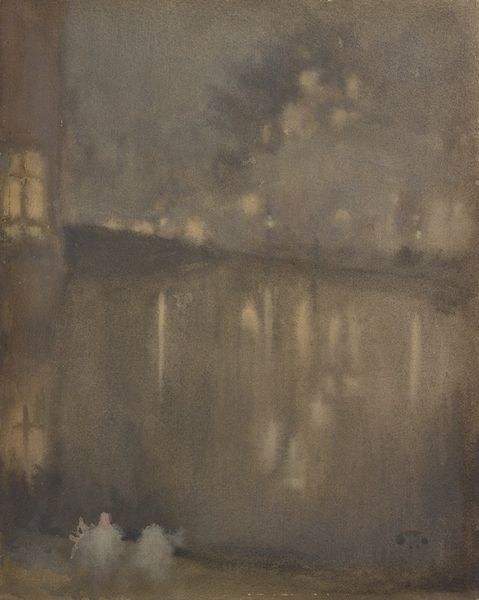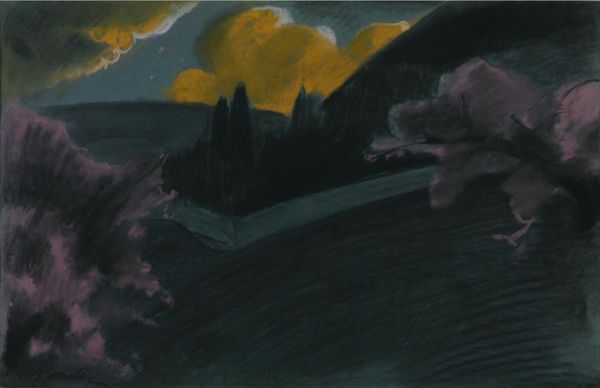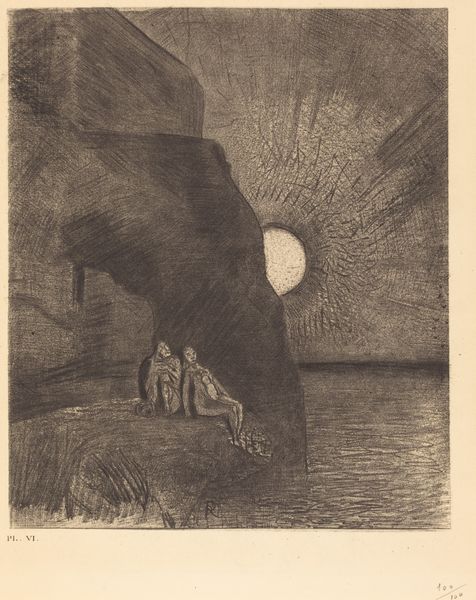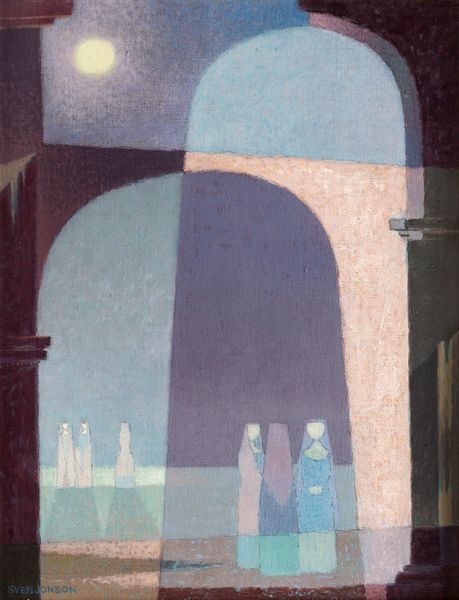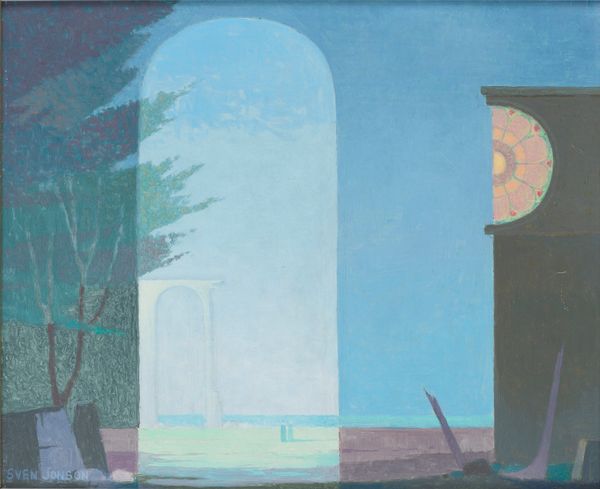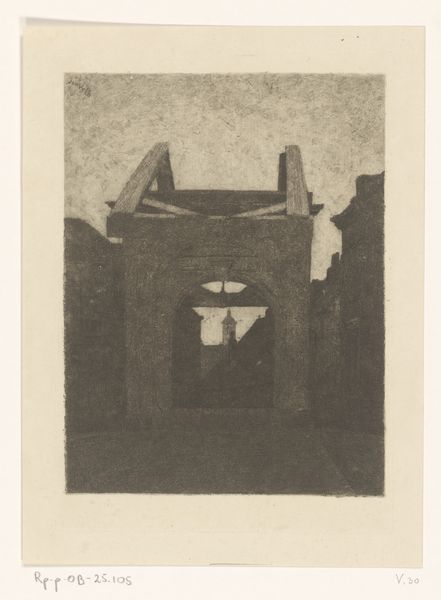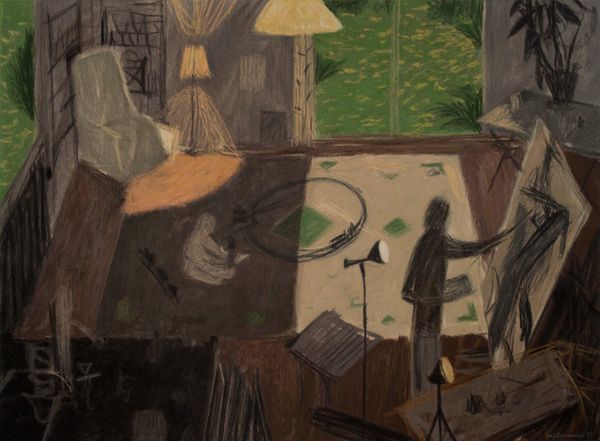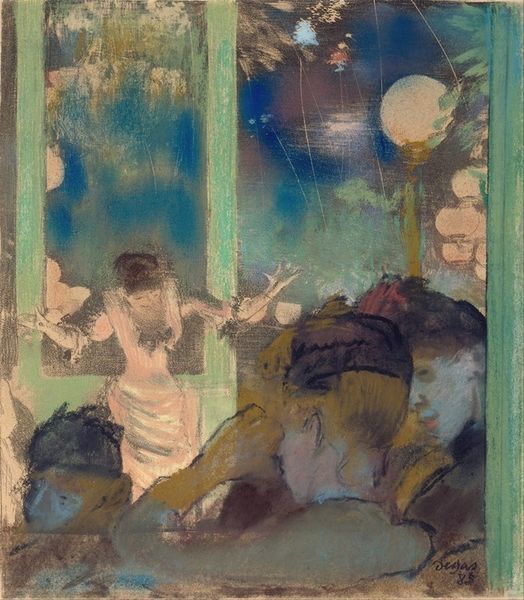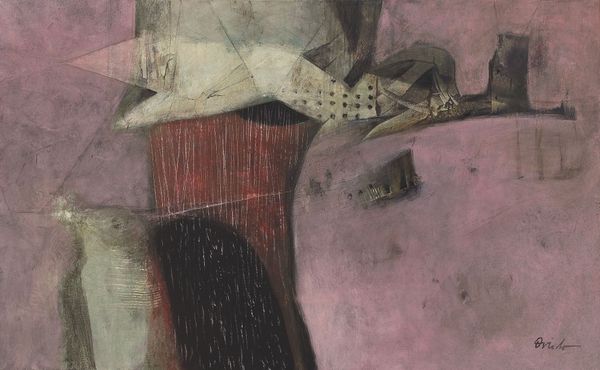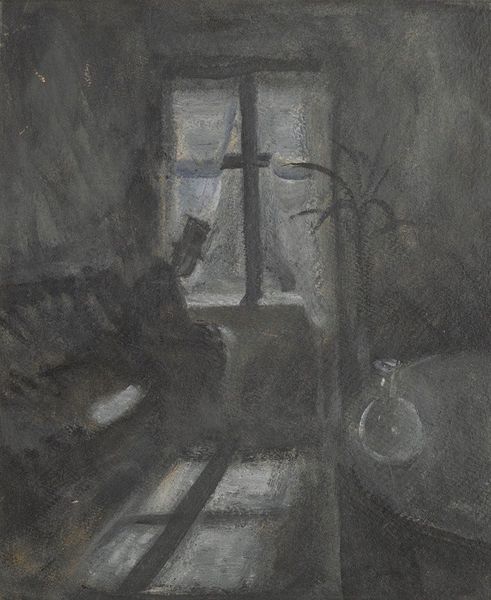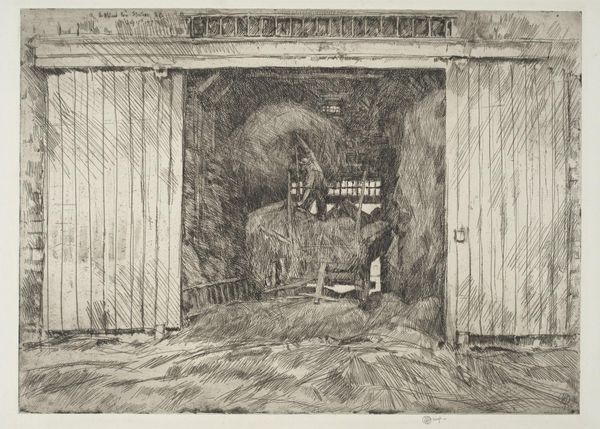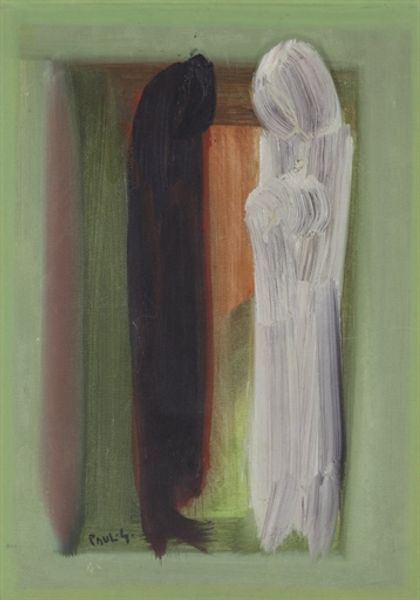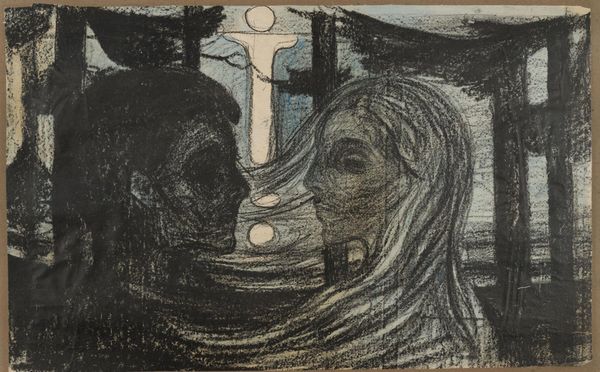
drawing, mixed-media, watercolor
#
drawing
#
mixed-media
#
water colours
#
landscape
#
watercolor
#
symbolism
#
cityscape
#
mixed media
#
watercolor
Copyright: Public Domain: Artvee
Editor: This is Léon Spilliaert's "Calvary and Purgatory in Ostend," created in 1908 using mixed media and watercolor. It's so stark – a really unsettling depiction of a cityscape at night. What elements of the composition strike you? Curator: I'm particularly interested in the tension created by Spilliaert’s masterful arrangement of geometric forms. Notice the dominant verticality – the bars of the gate, the columnar posts, even the implied lines of the cross in the background, countered by the arched shape above the gate. How does this vertical emphasis affect your interpretation? Editor: It makes it feel very closed-off, almost claustrophobic. And the color palette – so limited and muted – enhances that feeling. The lines are sharp and precise, which is kind of contradictory with the spectral quality of the figures above the gate. Curator: Precisely! The stark geometry contrasts strikingly with the ghostly figures that lend the scene an otherworldly ambiance. And note the limited, almost monochromatic palette, serving to flatten the space. Observe also how the artist renders the image, alternating layers, which emphasizes depth despite the restricted palette. This interplay, between depth and flat, gives the mixed-media drawing its structural significance. Editor: I see what you mean about depth! I was so focused on the kind of oppressive feeling that the limited color creates, I didn't really think about how he also created depth using that palette. Is there something in this visual construction that makes it, in your mind, unmistakably Spilliaert's? Curator: Consider his repeated deployment of flattened spaces to represent profound interior states and existential anxieties, this approach is a recognizable attribute in his greater body of work, which further elevates the image to the level of great art. Spilliaert expertly merges form and affect to evoke a palpable sense of spiritual desolation. Editor: That's so helpful – now I understand the method behind what felt like a simply moody aesthetic. Thanks for pointing out the interplay between space, depth, and those vertical lines, too; it makes such a difference to how I see the piece. Curator: My pleasure. Formal analysis, as you see, enables one to discern meaning through careful attention to constituent elements.
Comments
No comments
Be the first to comment and join the conversation on the ultimate creative platform.
